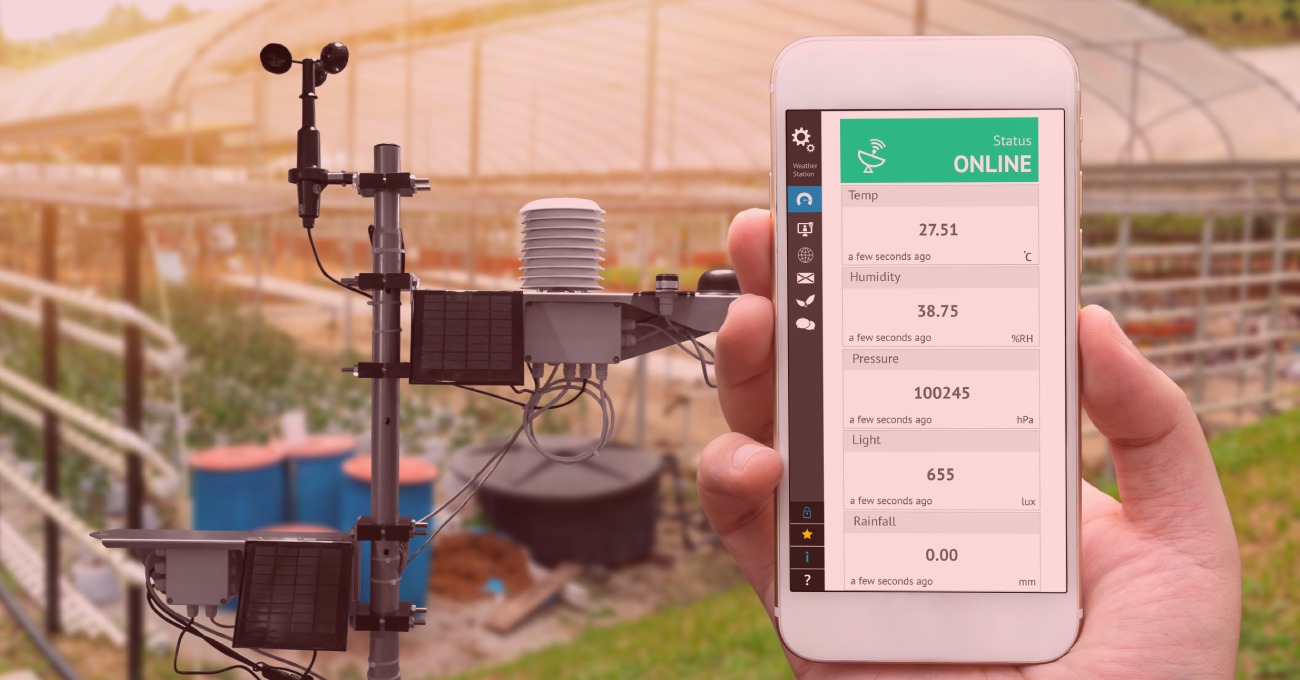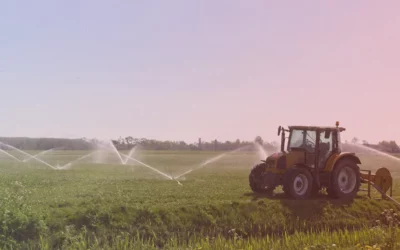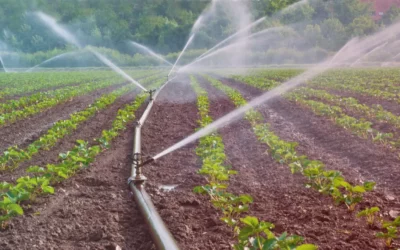IoT Based Weather Monitoring System For Micro-Climate Forecasting
Forecasting the weather has come a long way from where it once used to be. Not too long ago, the only way to find out about the day’s weather was through local news channels, radio stations or through aviation weather services. Now, it’s just one click away—all you have to do is check your smartphone.
Environmental monitoring has become incredibly important, given people’s need to be aware of the latest weather conditions wherever they go but more importantly, whatever their profession. Technology is evolving at a dynamic rate, and weather stations need to adapt in order to keep pace with consumer and commercial demand for accuracy. And one of the most important factors that must be considered are microclimates.
What are microclimates?
Weather is not always forecast accurately. One of the biggest drawbacks of the current weather forecasting system is that it is done on a grid. To produce day-to-day forecasts, global model grid lengths range between 9 and 13 km in the smallest sections of the grid all the way up to hundreds of kilometers, leading to inaccurate and inconsistent reports.
These grid systems can not consider microclimates, which are much smaller pockets of land with distinct features that affect temperature, precipitation, and wind.
Some common microclimates include:
- High-elevation areas
- Coastal regions
- Large forests
- Urban landscapes
To improve weather forecasts in a very specific location, it becomes important to understand and identify microclimate conditions. Whether it’s the topography or construction elements affecting different weather factors, accurately collecting data is essential for microclimates around the world.
So how does a microclimate form? It depends on different topographical features that would affect normal climate and weather patterns. For example, the contrast in topographies can affect airflow, ambient temperature, and cloud formation. The particular soil composition of land can have an effect on its rate of evaporation. Heavy vegetation on a specific area can affect airflow as well as moisture levels; this can be natural or manmade.
Microclimates aren’t limited to differences in nature; unnatural additions to a particular landscape can also create them. Urban centers generate high amounts of heat and smog, which can affect low- and high-level winds. Several acres of parkland in the middle of a city can cause multiple microclimates to emerge in a very small geographic area as well. The same principles apply to agriculture as well; differences in crops, irrigation practices, etc. can affect the microclimate as well.
Due to the very specific characteristics of locations with microclimates, it becomes difficult for a traditional grid-based monitoring system to consider different environmental factors. For example, certain variances can have a significant impact on predicting the path of a hurricane or a snowstorm. For someone who lives in or near such microclimates, the forecast as seen on TV may not be accurate.
In addition, conventional grid-based weather monitoring systems are bulky, expensive, and require constant surveillance. Data is transferred manually, which increases the margin for error and runs up expenses.
Here’s where an IoT-based weather monitoring system steps in.
What is the Internet of Things (IoT)?
So what exactly is the “Internet of Things” (IoT)? Simply put, it is a technology that looks to connect all kinds of devices and sensors to share the data obtained from various locations. Today, IoT devices are used across all industries, processing and analyzing data to coordinate traffic signaling, ensure industrial safety, monitor medical applications, or even regulate the temperature inside a house.
The Internet of Things offers a wide range of connected devices with different protocols in order to achieve complete machine-to-machine interaction. It is viewed as one of the biggest innovations in the data industry. This system connects everything to the internet, with the aim of exchanging data to trigger corresponding actions when needed.
IoT envisions a near-future where regular day-to-day objects will be fitted with microcontrollers and convention stacks that will make the devices ready to talk to each other. It looks to recognize, find, follow, observe, and oversee data across many different gadgets. The end goal of IoT is to make the internet more immersive and helpful.
The technology is an advanced solution for connecting different devices to the internet (in this case, the factors affecting the micro-climate of a region) and connecting them within a network. With the use of sensors and automotive electronic equipment, an advanced system can be developed to keep track of the many different characteristics of the climate, such as temperature, humidity, wind speed and direction, rainfall, and more. The system can then analyze all collated data and generate accurate microclimate forecasts that can be displayed in real-time on a digital screen (this is part of what we are doing for agriculture here at Benchmark Labs).
An IoT-based weather monitoring system connected to data centers could also keep track of past information, either on an hourly or a daily basis. The sensor data can be analyzed and plotted in graphs and statistics to further improve forecasting.
What does an IoT-based weather monitoring system entail?
IoT-based weather monitoring technology has been growing very quickly, and it has already bypassed the features and functionalities of conventional systems in many ways. Having been applied in the field of remote monitoring and advanced analytics, the technology is revolutionizing different ventures while offering a range of benefits.
Innovations in weather monitoring have focused on controlling and monitoring different weather conditions. IoT devices help measure the physical parameters of a certain location and upload them in real-time to cloud storage, where the data can be analyzed immediately.
These systems make climate monitoring in difficult geographical terrains possible. The manpower required for accurate microclimate forecasts is significantly reduced, and there is no longer any need to physically go into inhospitable environments just to get accurate measurements. Sensor devices placed in particular locations can do all the work to detect current climate details, such as rainfall, wind speed, humidity, soil moisture, CO2 levels, and other data needed for forecasting.
Going a step further, when one connects the weather station to the internet, IoT can be used much more extensively in predicting and disseminating accurate weather data in a particular location. This information can then be made available anywhere in the world.
Wireless weather monitoring significantly impacts businesses across different industries. Data received from sensors can be collected by microcontrollers and dispatched where it is needed. When leveraging IoT technology, other systems such as home automation, wireless sensor networks, and control systems can work smarter and more efficiently.
Accurate and timely microclimate forecasting using IoT plays a very important role in the field of agriculture, as it can provide farmers and landowners specific weather information that will dictate their daily operations. This technology can also make it possible to safely monitor extreme weather conditions in inhospitable environments.
Here are some of the advantages of using an IoT-based weather monitoring system when it comes to microclimate forecasting:
- The process is fully automated
- Does not require human attention
- Prior alerts of accurate weather conditions
- Low cost and efforts in the system
- High accuracy
- Self-protection
- A smart way to monitor the environment
- Efficient & time-saving
What’s next?
Understanding the conditions in a microclimate can help meteorologists and locals alike receive an accurate and specific weather forecast. Given the many factors that affect temperature, precipitation, and wind, accurate data collection and real-time analysis are more critical than ever.
IoT combined with the traditional grid forecast provides an efficient and low-cost solution for continuous monitoring of the environment. These sensor devices and robust systems can easily collect data and create a more accurate picture of a microclimate.
If you would like to learn more about Benchmark Labs from our team and sign up for a trial, go to our sign-up page.
Recent Posts
Modern Methods of Water Management in Organic Farming for 2022
[dssb_sharing_button icon_bg="#636979" _builder_version="4.16" _module_preset="default" background_color="#324155"...
How Vineyard Soil Sampling is Key to Wine Production
[dssb_sharing_button icon_bg="#636979" _builder_version="4.16" _module_preset="default" background_color="#324155"...
Factors Influencing Evapotranspiration and How to Measure it with AI
[dssb_sharing_button icon_bg="#636979" _builder_version="4.16" _module_preset="default" background_color="#324155"...




